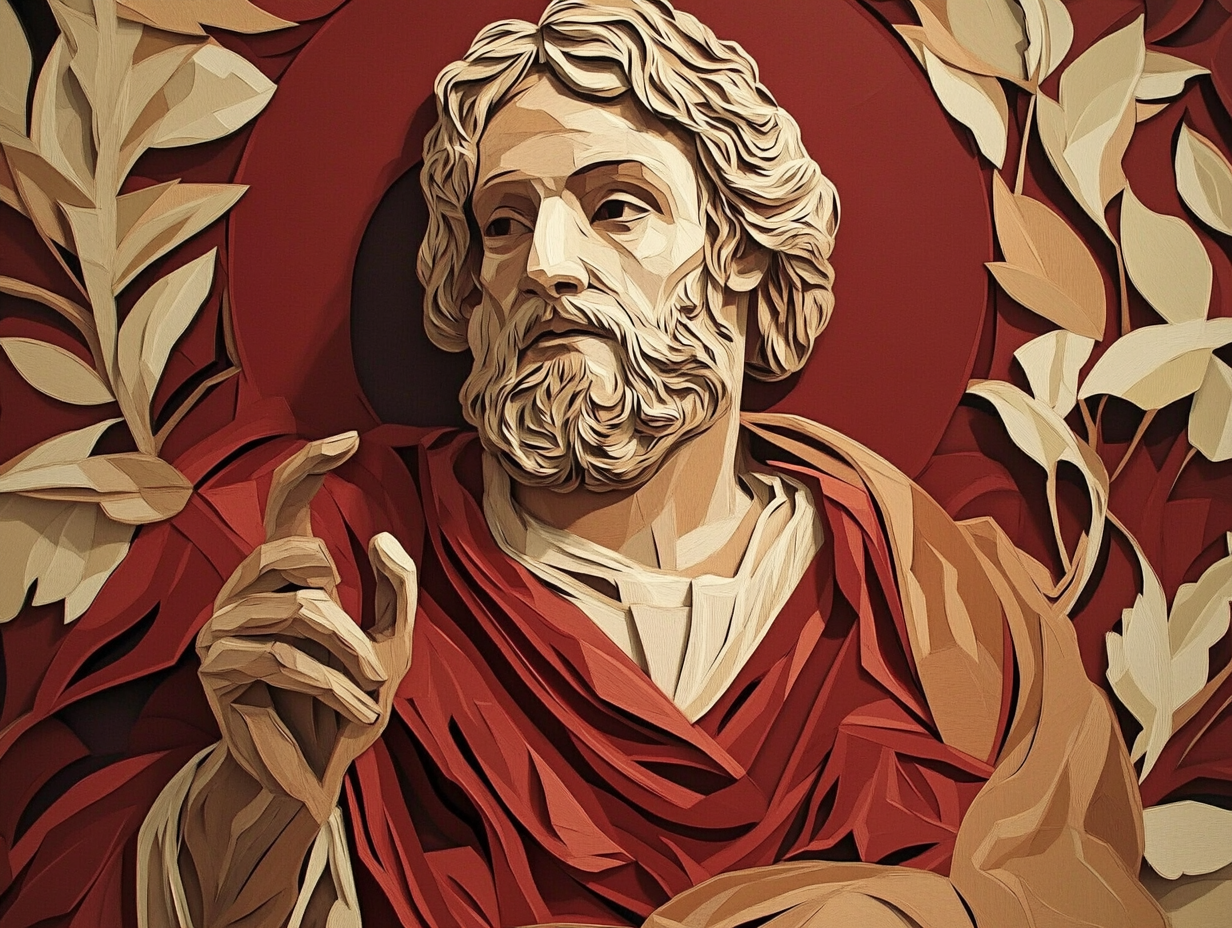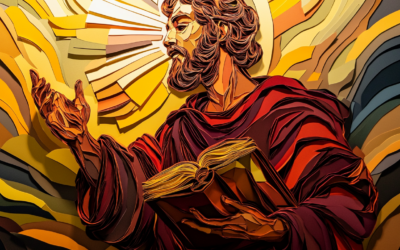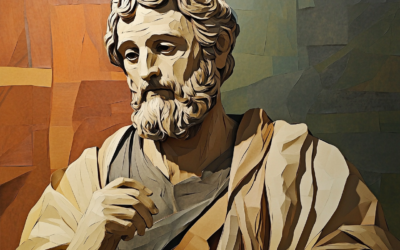James the First Martyr: History, Teachings, and Legacy
James, often referred to as “James the Greater” or “James, son of Zebedee,” holds a unique place in Christian history as the first apostle to be martyred. His story is one of zeal, transformation, and ultimate sacrifice. His death, recorded in Acts 12:1-2 (NASB), marks a pivotal moment in the early church’s struggle against persecution.
“Now about that time Herod the king laid hands on some who belonged to the church, to do them harm. And he had James, the brother of John, executed with a sword.”
Acts 12:1-2 (NASB)
This execution made him the first of the Twelve Apostles to be killed for his faith, setting a precedent for the brutal opposition that would follow against the fledgling Christian movement.
The Identity and Background of James
James was the son of Zebedee and the brother of John, two fishermen working on the Sea of Galilee when Jesus called them into discipleship. Their family was likely well-connected, as indicated by the presence of their mother, Salome, in key moments of Jesus’ ministry and their apparent acquaintance with the high priest (Mark 15:40, John 18:15-16). This suggests they were not merely humble fishermen but part of a broader social network within Jewish society.
“And going on from there He saw two other brothers, James the son of Zebedee, and his brother John, in the boat with their father Zebedee, mending their nets; and He called them. Immediately they left the boat and their father, and followed Him.”
Matthew 4:21-22 (NASB)
A Prominent Disciple in Jesus’ Inner Circle
James was not just one of the Twelve; he was part of the exclusive trio—alongside Peter and John—who witnessed some of Jesus’ most significant moments:
- The Transfiguration: Jesus revealed His divine glory to James, Peter, and John, giving them a glimpse of His true nature. (Matthew 17:1-2)
- The Raising of Jairus’ Daughter: Jesus allowed only these three to witness His miraculous power over death. (Mark 5:37-42)
- The Agony in Gethsemane: In Jesus’ darkest hour before His crucifixion, James was one of the few asked to keep watch and pray. (Matthew 26:36-37)
These experiences place James at the heart of Jesus’ ministry, entrusted with insights that even the other disciples did not receive.
The Fiery “Son of Thunder”
James and John had a reputation for intensity and zeal, earning them the nickname Boanerges, meaning “Sons of Thunder” (Mark 3:17). This title was not merely symbolic—it reflected their impassioned nature, sometimes to the point of rashness.
One striking example occurs in Luke 9:54, where James and John, indignant at a Samaritan village’s refusal to receive Jesus, ask, “Lord, do You want us to command fire to come down from heaven and consume them?” Jesus rebukes them, emphasizing mercy over vengeance.
This moment, though impulsive, also highlights James’ deep commitment to Jesus. He was all-in, ready to defend his Master with fervor—even if his understanding of Jesus’ mission needed refinement.
The First Martyr Among the Apostles
James’ zeal ultimately led to his martyrdom. He was the first of the apostles to be executed for his faith, put to death by Herod Agrippa I around A.D. 44 (Acts 12:1-2). His prominence in the early Church made him a prime target for persecution. Unlike Peter, whom an angel later freed from prison, James was not spared—demonstrating the unpredictable nature of divine providence in the lives of Jesus’ followers.
“Now about that time Herod the king laid hands on some who belonged to the church, to do them harm. And he had James, the brother of John, executed with a sword.”
Acts 12:1-2 (NASB)
This was a significant moment in early Christianity. James’ martyrdom signaled that following Jesus was not just a calling—it was a commitment unto death. His willingness to give his life affirmed his transformation from a fiery fisherman to a faithful witness of Christ.
Teachings and Theological Significance
While James himself did not leave behind any writings like Peter or John, his life and actions carried deep theological implications.
Apostolic Authority and Witness
As an apostle, James’ role was not just to spread Jesus’ teachings but to serve as a primary witness to His resurrection. The early church heavily relied on the apostles’ firsthand testimonies (Acts 1:21-22).
Zeal and Ambition in Faith
James’ request for a prominent place in Jesus’ kingdom, along with his brother John, demonstrated their zeal (Mark 10:35-37). While Jesus corrected their misunderstanding, He affirmed that James would indeed “drink the cup” of suffering (Mark 10:38-39)—a prophecy fulfilled by his martyrdom.
Martyrdom as a Model for Christian Suffering
James’ execution by Herod Agrippa I signified the increasing opposition from both Jewish and Roman authorities. His death mirrored Jesus’ own suffering, reinforcing the idea that following Christ meant carrying one’s cross (Matthew 16:24).
The Martyrdom of James: Historical and Scholarly Perspectives
The account in Acts 12:1-2 is the only direct biblical reference to James’ death, but church tradition and historical sources provide additional insights.
The Context of His Death
- Herod Agrippa I’s Rule: James was executed during a time of increased persecution against Christians, likely around 44 AD. Agrippa I sought to appease Jewish leaders who opposed the church (Josephus, Antiquities of the Jews, Book 19, Chapter 8).
- Method of Execution: The phrase “executed with a sword” likely refers to beheading, a Roman-style punishment, indicating that James was viewed as a serious political or religious threat.
Early Christian Testimonies
Clement of Alexandria (c. 150–215 AD) records an intriguing detail about James’ execution. Eusebius, quoting Clement, writes:
“The one who led James to the judgment seat, seeing his testimony, was so moved that he confessed that he himself was also a Christian. So they were both led away together, and on the way, he asked James for forgiveness. And James, after a little deliberation, said ‘Peace be with you’ and kissed him. And thus, they were both beheaded together.”
Church History, Book 2, Chapter 9
If true, this account shows the impact James had even in his final moments—turning an enemy into a fellow believer.
James in Church Tradition
Pilgrimage and Veneration
James, the son of Zebedee, didn’t just get a footnote in Christian history—he became one of its most revered saints. While his life ended with a swift execution under Herod Agrippa I (Acts 12:2), his legacy took on a life of its own, stretching across continents and centuries.
According to medieval Spanish tradition, James’s remains were miraculously transported to Santiago de Compostela, in present-day Spain. How did they get there? The story varies. Some say his disciples placed his body in a boat, and angels guided it across the sea. Others claim an unmanned stone vessel carried his remains from Jerusalem to the shores of Galicia. However improbable the details, the belief took root, and Santiago de Compostela became one of the most important pilgrimage sites in Christendom.
By the Middle Ages, the Camino de Santiago—the Way of St. James—had become the spiritual road trip of the era. Pilgrims from all over Europe trekked hundreds of miles, enduring hardships, bandits, and bad weather, all for the chance to venerate the saint’s relics. The journey was seen as a path to forgiveness, a way to cleanse the soul through physical suffering and devotion. The Codex Calixtinus, a 12th-century guidebook for pilgrims, even included hymns and miracles attributed to James, further solidifying his status as a powerful intercessor.
Church authorities didn’t just embrace the tradition—they championed it. In 1120, Pope Calixtus II officially declared Santiago de Compostela a major pilgrimage site, on par with Rome and Jerusalem. The Knights of Santiago, a military order formed in the 12th century, swore to protect pilgrims traveling to the shrine, reinforcing James’s image as both saint and warrior.
Throughout history, prominent theologians and church leaders spoke of James’s significance. Thomas Aquinas, in his Summa Theologica, referenced James’s martyrdom as a model of apostolic zeal. The medieval mystic St. Bridget of Sweden recorded visions of James guiding pilgrims. Even Martin Luther, despite his issues with veneration of saints, acknowledged James’s historical importance in spreading Christianity.
In modern times, the Camino de Santiago continues to draw thousands of pilgrims—some seeking spiritual renewal, others simply craving the experience. Scholars like John Williams, an expert on medieval Spanish art and religious history, have traced the influence of St. James in everything from medieval architecture to Renaissance literature. The site remains a UNESCO World Heritage location, a testament to the enduring power of a man who, though executed early, left behind a spiritual road stretching across centuries.
James didn’t just live and die; he became a legend, a saint with a legacy of faith, endurance, and a pilgrimage still walked by thousands every year.
Symbolism in Christian Art
James is often depicted:
- Holding a sword, representing his martyrdom.
- With a pilgrim’s staff and scallop shell, symbols linked to Santiago de Compostela.
- Alongside his brother John, emphasizing their early role in spreading the gospel.
The Legacy of James
James’ life was one of radical transformation—from an ambitious, hot-tempered fisherman to a fearless martyr. His role in the early church was foundational, and his death served as a stark reminder that following Christ comes with a cost.
His legacy continues through:
- The example of bold faith in the face of persecution (Acts 12:1-2).
- The inspiration of Christian martyrdom throughout history.
- The global pilgrimage tradition at Santiago de Compostela, reinforcing his continued influence.
His story challenges believers today: Are we willing to follow Christ even when it costs us everything?
Sources and Further Reading
- The Holy Bible (NASB & KJV)
- Josephus, Antiquities of the Jews, Book 19, Chapter 8
- Eusebius, Church History, Book 2, Chapter 9
- Clement of Alexandria, quoted by Eusebius
- Craig Keener, The IVP Bible Background Commentary: New Testament
- N.T. Wright, The New Testament and the People of God
Scripture quotations taken from the (NASB®) New American Standard Bible®, Copyright ©, 2020 by The Lockman Foundation. Used by permission. All rights reserved. lockman.org









0 Comments